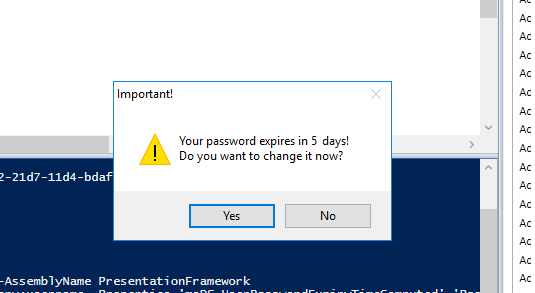
- #Exchange client notification list how to
- #Exchange client notification list install
- #Exchange client notification list download
#Exchange client notification list install
#Exchange client notification list download
Download the Duo OWA Installer Package for Exchange 2013+.See Protecting Applications for more information about protecting applications in Duo and additional application options. You'll need this information to complete your setup. Click Protect to the far-right to configure the application and get your integration key, secret key, and API hostname. Log in to the Duo Admin Panel and navigate to Applications.Ĭlick Protect an Application and locate the entry for Microsoft OWA in the applications list.
#Exchange client notification list how to
PowerShell example: Import-Module ServerManagerīefore moving on to the deployment steps, it's a good idea to familiarize yourself with Duo administration concepts and features like options for applications, available methods for enrolling Duo users, and Duo policy settings and how to apply them.

The PowerShell commands for this are: Import-Module ServerManagerĪdd-WindowsFeature NET-Framework-45-ASPNETĪdd-WindowsFeature NET-WCF-HTTP-Activation45Įnsure that the IIS Management Scripts and Tools feature is turned on as well. You can do this, for example, by running the following PowerShell commands: Import-Module ServerManagerĪlso make sure you have installed ASP.NET 4.5 support for IIS and HTTP Activation. If your organization requires IP-based rules, please review this Duo KB article. Firewall configurations that restrict outbound access to Duo's service with rules using destination IP addresses or IP address ranges aren't recommended, since these may change over time to maintain our service's high availability.


It's not commonly used for Exchange systems.This application communicates with Duo's service on TCP port 443. IMAP is very similar to ActiveSync in that it keeps email messages in sync between the Exchange server and clients, though POP works differently - it downloads email from the Exchange server to a single computer and does not keep the two devices in sync. ActiveSync keeps all the Exchange data synchronized between devices, so when email is replied to, deleted, or moved on your computer, for example, that change is immediately made on the Exchange server as well, and then synchronized with any other devices you might use, such as Outlook on a mobile device.ĪctiveSync isn't the only option, though an organization can choose to manage its email using IMAP or POP as well. This most often happens using a technology called Exchange ActiveSync. When you use a Microsoft Exchange account, email messages - along with calendar information and other Outlook details - are generally kept in sync between your Outlook client on a computer or mobile device and the Exchange server.

An organization can maintain its own Exchange server or rely on Microsoft to do that via the cloud using a Microsoft 365 account. Microsoft Exchange relies on the use of an Exchange server - a computer on which individual users' Exchange accounts are configured.


 0 kommentar(er)
0 kommentar(er)
